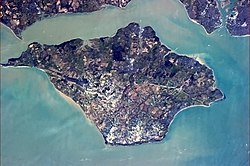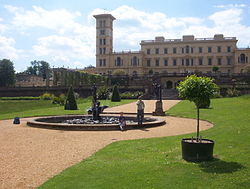Isle of Wight


The Isle of Wight is an island county that is just off the south coast of England. It is about 40 kilometres (25 miles) by 20 kilometres (13 miles) in size. About one hundred and twenty thousand people live on the island.
The Isle of Wight is a county. This means that it has a council of people who make decisions about some things that affect the people who live there. Until 1890 it was part of the administrative county of Hampshire. The county town of the island, which is the place where the council work, is Newport.
Many people like to go on holiday on the island. There are many hotels and tourist attractions. Queen Victoria often visited the Isle of Wight where she owned a large mansion called Osborne House. Tourism is the most important industry on the island.
Over half of the island is officially designated as an Area of Outstanding Natural Beauty. It is widely recognised as the most important site in Europe for finding dinosaur remains, and is a UNESCO Biosphere Reserve.
From 2024 health services on the island will be delivered by the newly formed ‘Hampshire and Isle of Wight Healthcare NHS Foundation Trust’, made by joining the Solent NHS Trust, Southern Health NHS Foundation Trust and Isle of Wight Trust.[1]
| Wikimedia Commons has media related to Lua error in Module:Commons_link at line 62: attempt to index field 'wikibase' (a nil value).. |
Isle Of Wight Media
A flint hand axe from the Paleolithic, c. 500,000 BP, found on the island in 2010.
An early Bronze Age axehead from c. 2000 – c. 1700 BCE, found on the island in 2011
An Anglo-Saxon copper-alloy pin, dating from c. 700 – c. 900, found on the island in 2012
Osborne House and its grounds are now open to the public.
Eugene Manet on the Isle of Wight, 1875 painting by Berthe Morisot
References
- ↑ "We are not going "off Island" says health boss as mainland NHS Trust approved". Isle of Wight County Press. 2023-11-23. Retrieved 2023-11-24.










